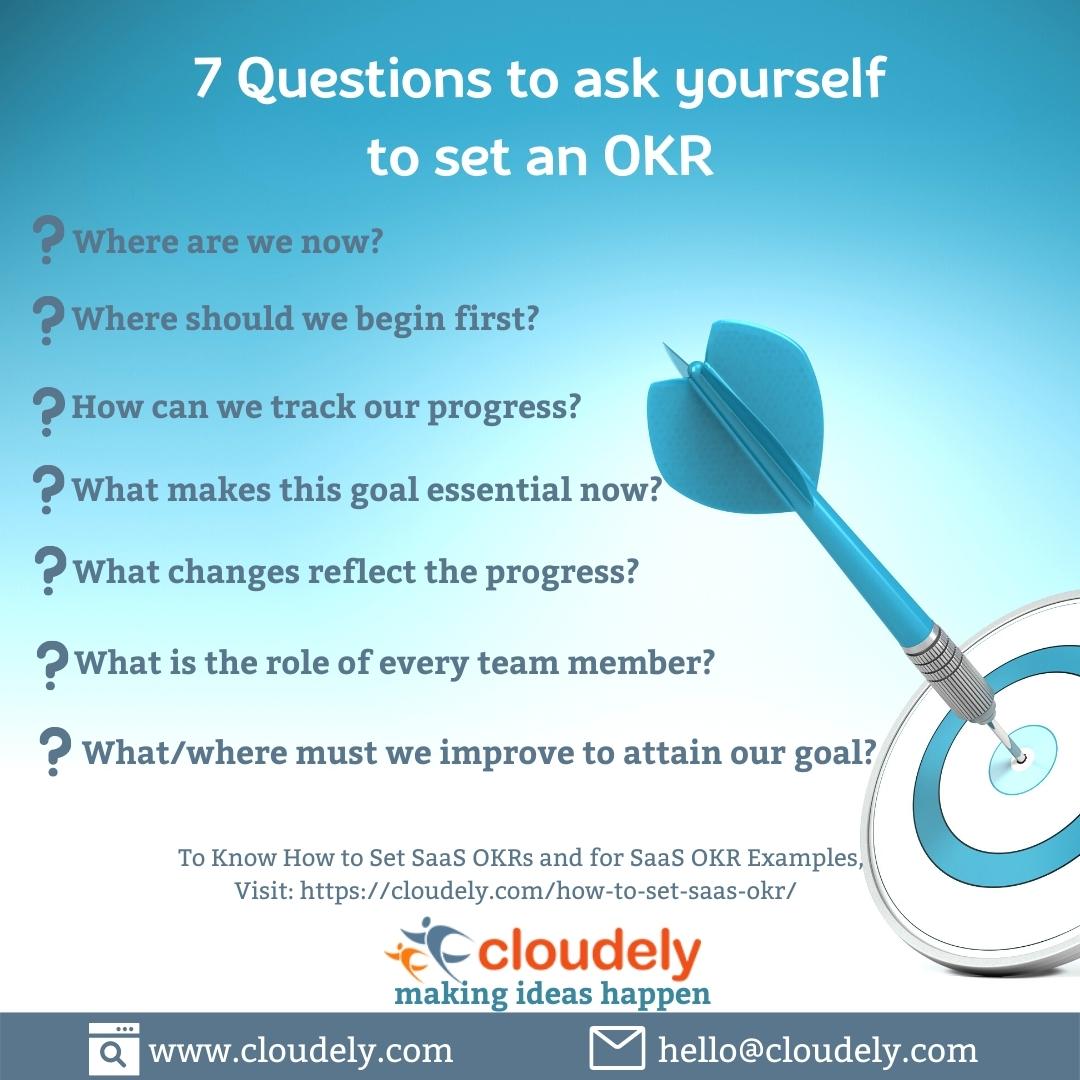As Mary Kay Ash puts it – “A good goal is like a strenuous exercise – it makes you stretch.” In a business setting, OKRs demarcate the precise stretch of a goal. Objectives and Key Results, OKRs in short, are one of the proven business goal management methodologies tried and tested by successful businesses. This article details what is an OKR, how to set SaaS OKRs, and explains the difference between KPIs and OKRs.
Table of Contents
The History and Evolution of OKRs
Andrew Grove of Intel is considered the Father of OKRs. He was the visionary who introduced this game-changing goal-setting methodology in the early 1970s that guides toward setting measurable goals.
Three decades later, around 2000, John Doerr of Google introduced OKRs to guide the teams towards organizational goal accomplishment.
Over the next two decades, Google followed the OKR methodology to align the employees toward the company goals. Today, industry giants including Asana, Facebook, Microsoft, Siemens, Deloitte, Dell, Accenture, LinkedIn, and Adobe follow OKR goal setting in their B2B marketing strategy and business success.
What is an OKR?
An Objective and Key Result (OKR) is a framework that directs how to attain business goals in measurable ways.
OKRs are targeted and aggressive. They consider the result size as an indicator of progress towards the goal. OKRs make any long-term goal attainable by breaking it into short-term goals with measurable results.
An OKR statement typically looks like this:
We shall [objective], as measured by [key result].
Objectives can differ from team to team or individual to another. Some of the team objectives could be:
- Improve lead generation
- Increase customer retention
- Expand website traffic to global
- Increase profits
Key results indicate how the objective is envisioned to be accomplished. For instance, key results for the above objectives could be:
- Target a narrow group of qualifying leads
- Engage and delight customers through content marketing
- Watch global competitors and improvise keyword strategy
- Inspect revenue leakage and implement technology to boost the revenue.
Why are OKRs important for SaaS companies?
SaaS OKRs help companies align employees towards organizational goals effectively. They boost employee motivation on a professional and personal level by breaking large-sized goals into chunk-sized achievable targets.
Teams with OKRs can work productively compared with their counterparts. OKRs clarify the gaps in the processes, tools, and technologies required to achieve the goals.
Results such as providing better customer service, focusing on metrics, and improving team coordination become quicker with SaaS OKRs.
Additionally, OKRs increase transparency among team members, protecting the thin line between their individual goals and team priorities. They direct employees to achieve goals systematically, thus benefitting the employees, customers and organization.
How do OKRs differ from KPIs?
Both KPIs and OKRs drive employees towards goals.
A KPI reflects the quantitative progress of a business goal. KPIs vary with task and team.
For instance, the KPIs of the sales team differ from those of the training team. Similarly, customer service KPIs differ from marketing KPIs.
The main difference between a KPI and an OKR is:
OKR is a framework for goal setting, while KPI is a measurement tactic.
KPIs are the inputs to create an OKR statement. While KPIs set the numerical goal, OKRs direct how to achieve that numerical goal and what results indicate the goal progress.
In general, KPIs are long-term oriented, while OKRs are for short-term or a maximum of one year.
A question arises here: Between KPIs and OKRs, which one is better?
KPIs have always been the standard metrics to measure projects or goals’ success.
OKRs, on the other hand, align with a larger vision and make them achievable through clear short-term goals.
An appropriate blend of KPIs and OKRs benefits organizations for quicker desired outcomes.
The SaaS OKR Framework
Every business has its goals – while some pertain to internal processes and work culture, others relate to customer retention and revenue generation.
To set a SaaS OKR, as groundwork, prepare answers for the following questions:
- Where are we now?
- What/where must we improve to attain our goals?
- What makes this essential right now?
- What changes reflect the goal progress?
- How can we note/track our progress?
- Where should we begin first?
- What is the role of every team member?
Such questions help you clarify Objectives, Key Results, Initiatives and Strategies.

How to prepare a good SaaS OKR?
OKRs are collaborative and assign individual ownership. Hence brainstorming must be the first step to setting SaaS OKRs. Inform your team members and invite every concerned to participate in the OKR setting.
Here are 5 simple steps to set SaaS OKRs that work:
Step #1:
Examine your business goals. OKRs must always be in sync with the organizational goals and drive everyone individually towards the business vision.
Step #2:
Set an objective – a clear direction where to land next.
- Increase revenue compared to last quarter?
- Improve customer experience?
- Drive more website traffic?
- Attract more learners into a training program?
That’s your objective.
Step #3:
Plan how you are going to achieve the objective. That becomes the ‘Key Result’.
- Cross $1 million in sales.
- Achieve NPS over 85.
- Get 10k views per month.
- Achieve 1000 new students in the upcoming batch.
Define your Key Result.
Step #4:
Create a plan to attain the key result. In other words, get the ‘Initiative’ ready.
- Host webinars and attract targeted leads.
- Add customer chatbot, focus on increasing customer lifetime value and provide technology to the customer service team to work more efficiently.
- Invest in SEO and paid ads.
- Conduct campus drives and make use of social campaigns.
Step #5:
Track your OKRs at regular intervals. OKRs are supposed to inspire towards their final achievements. That should not hinder you from celebrating smaller goals in the journey. Tracking the metrics and celebrating the teamwork motivates your team towards achieving the final key result.
SaaS OKR Examples
OKRs vary with teams and organizational goals. Here are a handful of SaaS OKR examples for better understanding:
SaaS OKR Example 1:
Objective: Emerge as the #1 digital transformation partner
- Key Result 1: Survey to identify the ten most in-demand technologies and gather related talent to strengthen your capabilities.
- Key Result 2: Conduct team audits to identify silos, technology, and manpower gaps
- Key Result 3: Expand business presence to at least 5 more geographical locations.
SaaS OKR Example 2:
Objective: Increase sales and customer retention
- Key Result 1: Create discounts and offers to promote sales
- Key Result 2: Promote on social media and paid ads to increase the visibility of offerings
- Key Result 3: Send custom gifts to delight customers and focus on cross-selling and upselling
SaaS OKR Example 3:
Objective: Increase revenue flow
- Key Result 1: Increase sales by 25% each month
- Key Result 2: Increase customer retention rate by 15%
- Key Result 3: Increase customer lifetime value by 20%
SaaS OKR Example 4:
Objective: Increase team productivity
- Key Result 1: Shorten the approval time to two days from one week
- Key Result 2: Conduct audit meetings once a week
- Key Result 3: Increase on-time task completion rate from 60% to 90%
SaaS OKR Example 5:
Objective: Generate more qualifying leads (MQLs)
- Key Result 1: Attain 100 MQLs from paid ads
- Key Result 2: Gather 50 MQLs from organic traffic
- Key Result 3: Gather 100 MQLs from email marketing
- Key Result 4: Invest 35% more in Account Based Marketing
SaaS OKR Example 6:
Objective: Reduce bugs in testing
- Key Result 1: Add 5 more expert testing resources by the end of this month
- Key Result 2: Conduct team meetings once every week
- Key Result 3: Cut down the response time from 15 minutes to 5 minutes
Tips for setting effective SaaS OKRs
OKRs are strict by definition. They aim to increase employee productivity, delegate responsibility, and attain the outcome. Here are some handy tips for setting SaaS OKRs so they won’t burden your team more than they should:
- Limit the number of objectives for every cycle (quarterly, half-yearly, or annual).
- Remember that OKRs take time for the process to be in place and results to be visible.
- Set specific OKRs. The key results must be action-driven and aid in goal accomplishment.
Let Cloudely help achieve your business goals
When it comes to goal setting, it can be hard to razor-fine the target without the right tools and resources. For organizations, technology or resources can be hindrances to implementing SaaS OKRs.
Cloudely helps global businesses boost their revenue, retain customers, promote contract success rate, and hire skilled talent. Contact us to achieve your SaaS OKRs in your desired timelines with efficient resources and razor-sharp technology.






